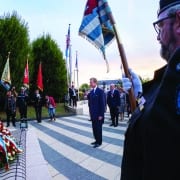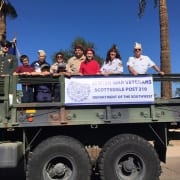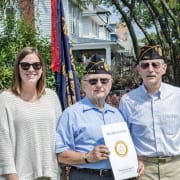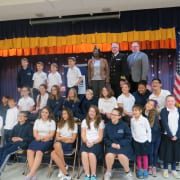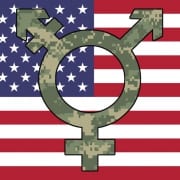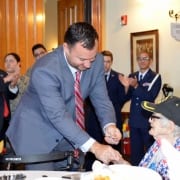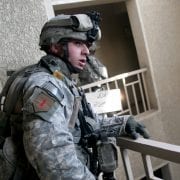Luxembourg Honors Jewish American GI on 75th Anniversary of his Death
By Deborah Josefson
A monument and square named after a Jewish American soldier lies in the town of Petange at the southwest border of the tiny country of Luxembourg, where France and Belgium meet. This soldier was my great-uncle, 2nd Lt. Hyman Josefson. He was the first American soldier to die for the liberation of Luxembourg. For 45 years he was the quintessential Unknown Soldier, but for the people of Luxembourg, he represented the ultimate sacrifice of American GIs.
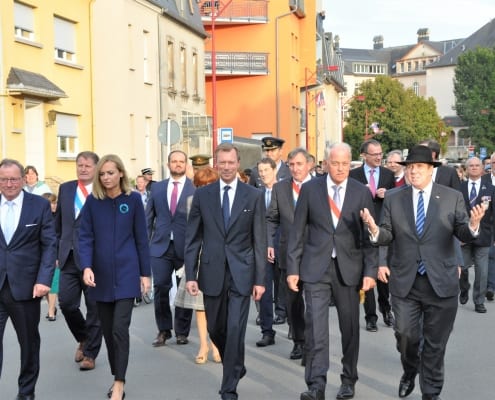
Procession to Hyman Josefson Square led by Duke Henri (front center) flanked by dignitaries including Petange Mayor Pierre Molina and U.S. Ambassador J. Randolph Evans.
The people of Luxembourg commemorate their liberation from the Nazis and the sacrifice of Josefson and other American GI’s each year. Every five years, the celebrations include visits from the country’s Grand Duke, the U.S. Ambassador, and other dignitaries. As they did this September 9, the officials visit Hyman Josefson Square to lay wreaths in honor of the American troops. The liberation festivities continue with a week of pro-American parades, displays of vintage World War II military vehicles, American-style barbeques and Rockabilly music festivals.
Josefson was a first generation American and one of 550,000 GI Jews. These Jewish American men felt their service in World War II was both an act of patriotism and a fight against Hitler for the survival of their brethren.
An accomplished lawyer and engineer, Josefson was already 32 when he voluntarily enlisted just six weeks after Pearl Harbor.
Josefson was born in South Fallsburg, New York in 1909 to Harry and Lena Josefson of Iasi, Romania. He entered Cornell University at age 15 on an academic scholarship with a perfect score on the state scholarship exam. After graduating in 1929 with a civil engineering degree, Josefson stayed at Cornell for another two years to receive his law degree.
As a young lawyer, he argued before the New York State Supreme Court and Court of Appeals on matters of interstate commerce and transportation.
When the U.S. entered World War II, Josefson enlisted in the Army. He trained at Fort Knox and joined the 5th Armored Division’s 85th Calvary Reconnaissance Squadron. After two years of training in the U.S., his unit landed at Utah Beach on July 24, 1944. They marched through Normandy and Northern France, reaching the Belgian border by September 2.
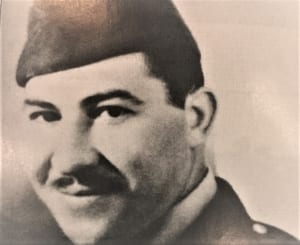
Hyman Josefson
Luxembourg’s Prince Felix and Crown Prince Jean joined the allies, and by September 7 they were fighting alongside the 5th Armored Division, gearing up for a return to their homeland.
As a platoon leader and car commander of the 85th Cavalry Reconnaissance Squadron, Josefson was an advance man. His mission was to find, fix, and fight. In other words, to ascertain the strength and disposition of the enemy, remove obstacles, and clear the way for further combat.
On September 9, 1944, by mid-day, Josefson’s armored M8 Greyhound Patrol car is the first to breach the Belgian border and enter Petange, Luxembourg. But the celebratory air is severely dampened when a hidden Wehrmacht cannon hits Josefson’s Greyhound just as it approaches a flour mill. Josefson is killed, and three others in his car were wounded.
Gunner Cyril Mayrose, technical sergeant and driver Burt Magee, and radio operator John Mitchell escaped the car, which continued to burn for days.
The crowd that saw it happen erected a makeshift memorial near the flour mill.
Meanwhile, the Americans pushed on and liberated Luxembourg City on September 10, returning Prince Felix and Prince Jean to the Grand Duchy.
In 1947, a permanent monument replaced the makeshift memorial. The inscription honored the memory of the unknown American soldier who died for the liberation of Luxembourg.
In 1989, Mayrose told the city that their unknown soldier was Josefson, which lead the city to change the name of the area by the monument to Hyman Josefson Square.
75 years later in Luxembourg, World War II is not forgotten, Americans are warmly received, and the legacy of Hyman Josefson lives on.
Volume 73. Number 3. 2019
